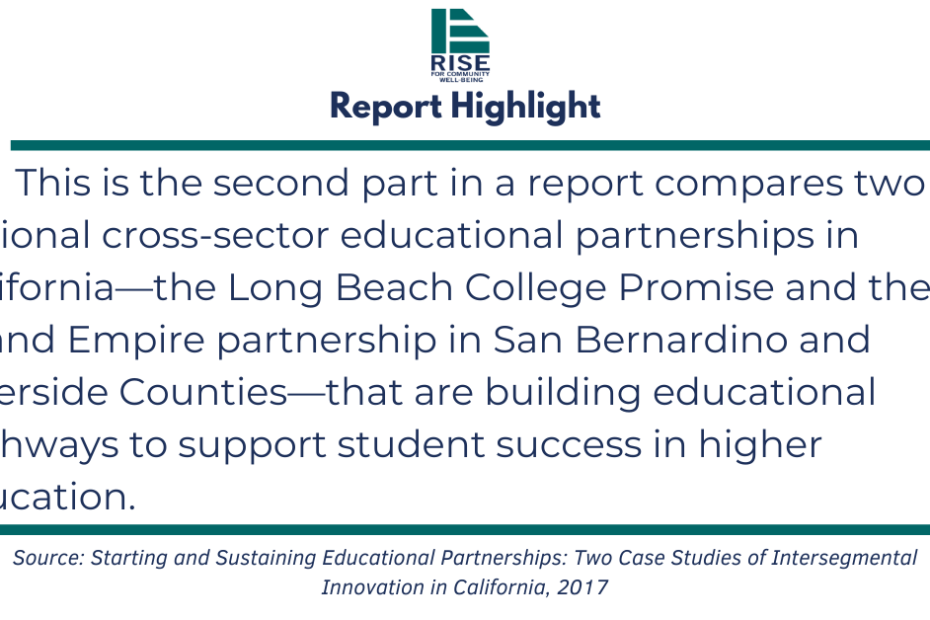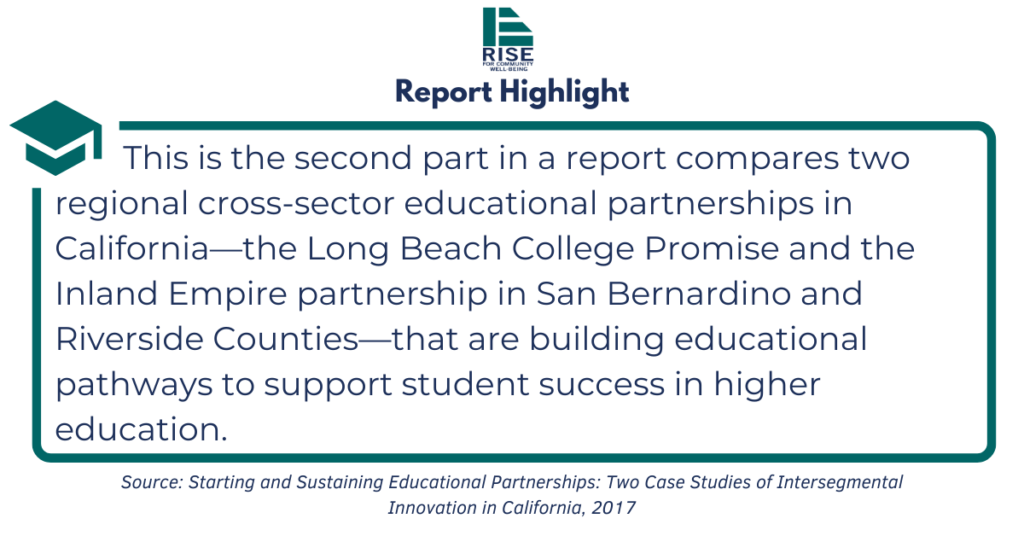Starting and Sustaining Educational Partnerships: Two Case Studies of Intersegmental Innovation in California
Authors: Rose Asera, Robert Gabriner, and David Hemphill
Publication: College Futures Foundation
Date: 2017
The development of partnerships that cross education segments is a strategy that extends resources and represents a promising avenue for improving student outcomes throughout the educational system. These initiatives are organized at the school district, city, county, or metropolitan level, and attempt to improve education by promoting collaboration among multiple sectors. Effective collaboration in practice can lead to enhanced student outcomes and more successful organizational strategies. Moreover, bringing together educators from different institutions that serve students from the same community offers the chance to identify common perspectives and commitments, rather than focus on differences (Henig, et al., 2015; Kania & Kramer, 2011; Moor et al., 2015).
Although public- and privately-funded programs have over the years encouraged intersegmental partnership in different ways, there are still open questions about what makes some partnerships work while others fail to take hold. There is no simple formula for what makes a partnership work. Yet case examples from the field are well worth exploring to learn what is possible in widely differing settings.
This report compares the experiences of two regional cross-sector partnerships in California— the Long Beach College Promise and the “Inland Empire” partnership comprising San Bernardino and Riverside Counties—that are building educational pathways to support student success in higher education. The initial catalyst for this study was the Governor’s Incentive Awards (GIA), established in the California Governor’s 2014 budget, which were designed to support educational partnerships comprising schools, community colleges, and universities. In this context, the College Futures Foundation commissioned the comparative case studies in order to gain insights into strategies for developing and sustaining multi-sector partnerships that are positioned to increasing student success across the educational pipeline from high school to bachelor’s degree.
The main goals for the two case studies were the following:
- Learn why the case study institutions opted for a partnership strategy
- Understand how partnerships evolve and get to scale.
- Discover how the partnerships pursued their goals
- Explore the role of investment by external funders in promoting cross-sector partnerships


